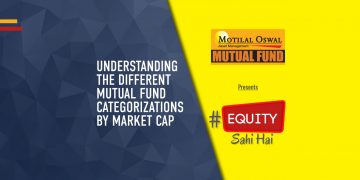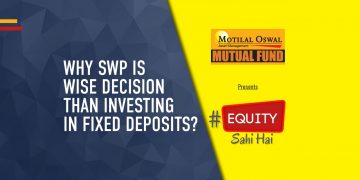When approaching the stock market, most people dream of making big profits. Getting rich fast, and with minimal effort — that’s the dream. However, in order to build a good investment portfolio, what you need is consistency and compounding — not crazy money schemes.
We need to build a savings habit and we need to invest those savings consistently to generate passive income. A diversified portfolio of different index funds can provide these benefits.
What are index funds
As the name suggests, index funds invest in a particular market index. For example, if you select a Nifty50 index fund, the portfolio will mirror the components of the Nifty50 stock index. You can select different types of index funds across different sectors.
An important characteristic of index funds is the passive nature of investing. Normally, in active mutual fund schemes, the fund manager plays a role in selecting the stocks to invest in. The portfolio is adjusted according to the market conditions.
In index funds, however, the portfolio is the same as the index it mirrors. If the components of the index are changed, the portfolio is adjusted to reflect those changes. But apart from that, the fund manager has no involvement in the selection of stocks.
What to know before investing in index funds
Index funds are, at the heart of it, stock investments. This means, there are certain prerequisites that you should know about before you start investing.
The first thing to remember is that index funds are meant for a long-term investment horizon. As with all other equity investments, it is recommended to hold the asset for at least 10-15 years. This ensures that the effects of the short-term volatilities in the stock market are nullified.
Please note that index funds may even generate negative returns in the short term. It is only if you stay invested for a decade, at least, that you are likely to see the effects of compounding.
The other thing that you should keep in mind is that index funds offer average market returns. This could be lower than active funds who generally try to beat the market average returns.
So if you’re looking for aggressive short-term growth, index funds are probably not right for you. But, if you’re looking to build a stable portfolio over time with passive investments, index funds are the answer.
Who can invest
Anyone who has a demat account can invest in index funds in India. If you don’t have a demat account, you can open one with any brokerage platform.
In fact, you can open a demat account online within a few minutes. The KYC (Know Your Customer) requirements can be completed online. You will require the following documents:
- Application form
- PAN card
- Photograph
- Identity proof
- Address proof
How can you invest
Starting your investment journey can be a daunting step. There is a lot to think about, and you open yourself up to potential risk. If you think you might require some help, you can consult with a financial advisor.
The advantage of consulting with an advisor is that you get to adopt a structured approach right from the beginning of your investment journey. You create a financial plan, set down your investment goals and then select your funds with a clear objective in mind.
How to select the right index fund
We’ve discussed why investing in index funds can be a good idea. But which index fund should you invest in?
Choosing an index fund is not as simple as choosing an index to mirror. There are a lot of different factors that come into play.
Expense Ratio
The expense ratio is the amount charged by the fund house for investing your money. This includes the management fees, plus any marketing and administrative expenses that the fund house incurs.
Now, the expense ratio for index funds is lower than other actively managed funds. There is a simple reason — because index funds are passive funds, they don’t require a lot of attention from the fund managers. This is why the management fees component of the expense ratio is much lower.
In spite of that fact, there is a range of expense ratios that can be found among different index funds.
When you make your choice, make sure you’re comfortable with the expense ratio involved.
Assets Under Management
AUM or assets under management refers to the total fund amount. A higher AUM indicates that the fund is popular and has attracted large investments from numerous investors.
If you’re unsure which index fund to invest in, you can go for one with a large AUM. This is generally the safer option and signals the market’s overall confidence in that fund.
Fund Manager
The fund manager’s role is not as important in the case of index funds as it would be in the case of more actively managed funds. But you should still consider it.
Look at which funds they have managed in the past, and what the historical performance has been like. You can also check whether the fund manager’s investment philosophy and principles match your own.
Past Performance
The past performance of the fund indicates what the average growth rate has been like. It will help you estimate the kind of returns you can expect.
Please keep in mind that just because a fund has performed well in the past, it does not mean it will do so again in the future. But it is a valid criterion for comparing different index funds.
Which platform is best for investing in index funds
Index funds are offered by all online mutual fund distribution platforms. You can either opt for an aggregator platform, or you can invest directly through the AMC’s website. If you’ve enlisted the services of an investment advisor, you can also invest directly through them.
Please keep in mind that if you decide to invest directly through the AMC’s website, you’ll only be able to access that AMC’s schemes. On the other hand, through a distribution platform, you’ll be able to access the funds from the different AMCs.
Disclaimer: This publication is pursuant to Investor Education and Awareness Initiative by Motilal Oswal Mutual Fund. This shall not be construed as offer to invest in any financial product or Scheme. The objective of this publication is restricted to informational purposes only. All investors have to go through a one-time KYC (Know Your Customer) process. For further details on KYC, Change of address, phone number, bank details etc. list of SEBI registered Mutual Funds and redressal of complaints including details about SEBI SCORES portal, visit link https://www.motilaloswalmf.com//New_Page/KYC-and-Redressal-of-Complaints/9. SMART ODR portal, visit link https://smartodr.in/login. Investors should invest only with SEBI registered Mutual Funds details of which can be verified on the SEBI website under “SEBI Intermediaries/ Market Infrastructure Institutions.
This blog has been issued on the basis of internal data, publicly available information and other sources believed to be reliable. The information contained in this document is for general purposes only and not a complete disclosure of every material fact. The information/data herein alone is not sufficient and shouldn’t be used for the development or implementation of an investment strategy. It should not be construed as investment advice to any party the blog does not warrant the completeness or accuracy of the information and disclaims all liabilities, losses and damages arising out of the use of this information. Mutual Funds are subject to market risk. Read the offer documents before investing. Readers shall be fully responsible/liable for any investment decision taken on the basis of this article.
Mutual Fund investments are subject to market risks, read all scheme related documents carefully.








































